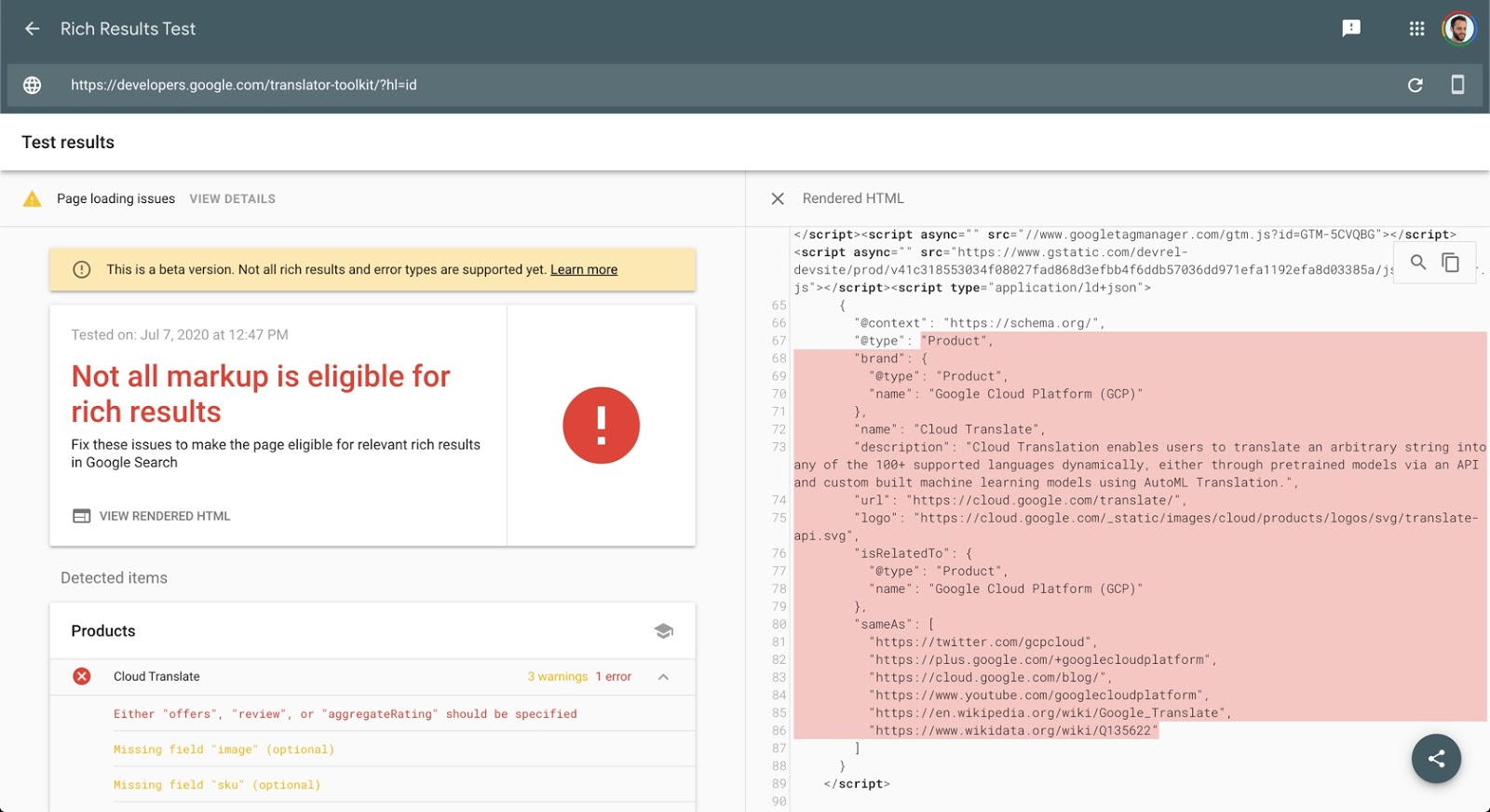Google: the rich results test is now ready and out of beta
Goodbye to the test tool for structured data and final welcome to the Test of multimedia results: this is the summary of the announcement of Google, which has officially brought out of beta the tool that from now on will be used to verify the rich results in SERP, a.k.a the multimedia results that can be generated by the structured data of the page beyond the standard blue links.
The rich results test becomes the one and only tool
Signing the post on the company’s official blog is Moshe Samet, Product Manager of Search Console, who provides some interesting information: first, the Rich Results Test now fully supports all the features of Google search results and is out of beta.
At the same time, the company is preparing to deprecate the structured data testing tool. This tool will still be available in the short term, but it will be “retired” in favor of the test of multimedia results, which will remain the only tool to test and validate the structured data of the pages of the site.
Characteristics of the rich results test
As we know, multimedia results are experiences that appear on the Google results page and enrich user searches, offering additional contents compared to standard blue links; they are based on structured data and may include, for example, carousels, images or other non-textual elements (here a list of the several features that can be activated).
Over the past two years, says Samet, Google has “developed the Rich Results Test to help you test your structured data and preview your multimedia results”; specifically, the tool:
- Shows what search feature enhancements are valid for the markup we are providing.
- More effectively manages the markup of dynamically loaded structured data.
- Renders both versions – mobile and desktop – of a result.
- It is fully aligned with the Search Console reports.
How the tool works
We can use the test of multimedia results by simply accessing this page and entering the full URL of a page or snippet code.
The tool reports errors and warnings found on the page, which may prevent its display as a multimedia result or (in the case of warnings) limit its appearance. For example, a notice for a missing image property could mean that the page could still appear as multimedia result but without the image.
History of the rich results test
As Matt Southern recalls on Searchenginejournal, the test on rich results was introduced back in 2017 as a solution to test rich snippets, rich cards and other types of “rich” items that can be viewed in Google search results.
The tool provides a more accurate representation of how a page is displayed in search results, as well as the ability to test structured data within dynamically loaded contents. Moreover, it is able to test source data such as JSON-LD, Microdata and Rdfa.
At its first introduction, the multimedia results test only supported four types of structured data: recipes, jobs, films and courses. It was therefore necessary to use the other tool – the test of structured data – to analyze any other type of markup used on a page.
With the development of these years, however, the rich results tool has been enhanced and is now able to test all types of markups supported by Google search results, making it virtually useless the presence of another tool. From here, the choice to deprecate the oldest tool that has become less useful and capable, so to avoid any difficulties for the owners of the sites.





